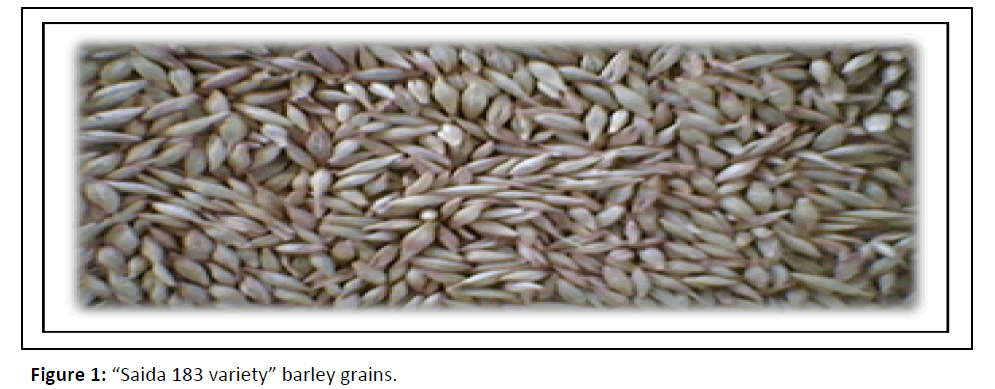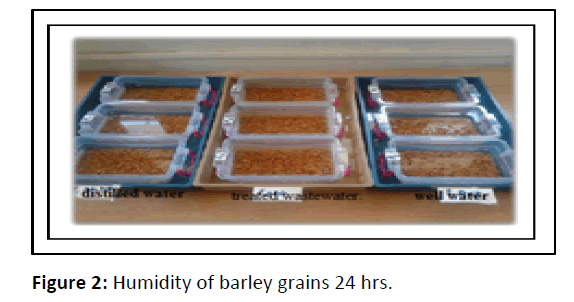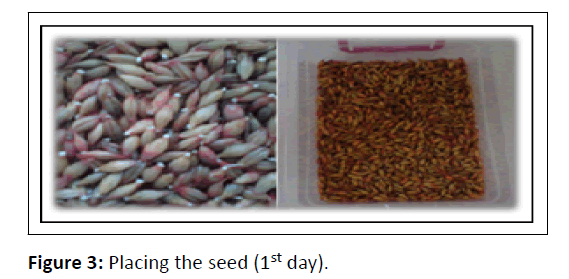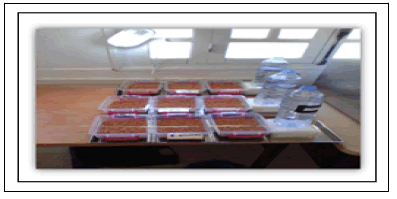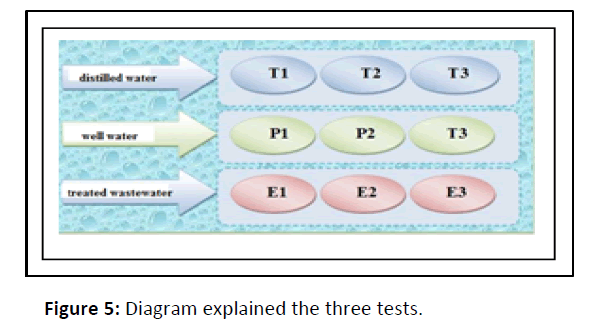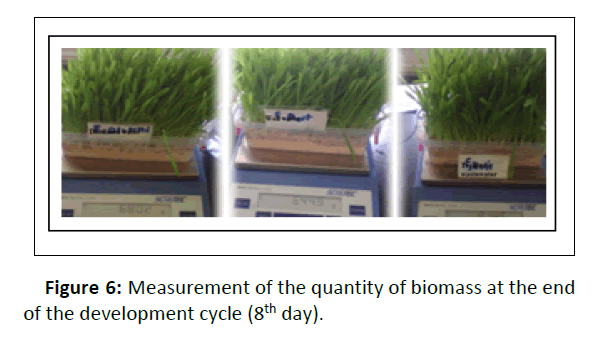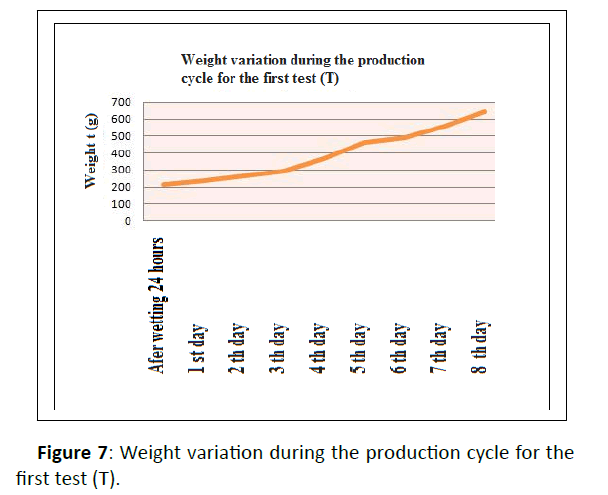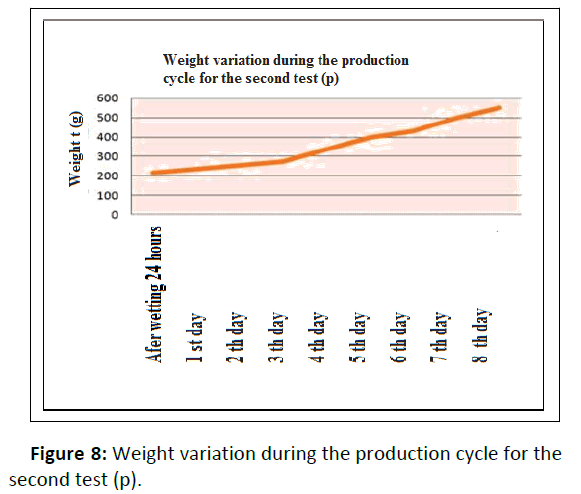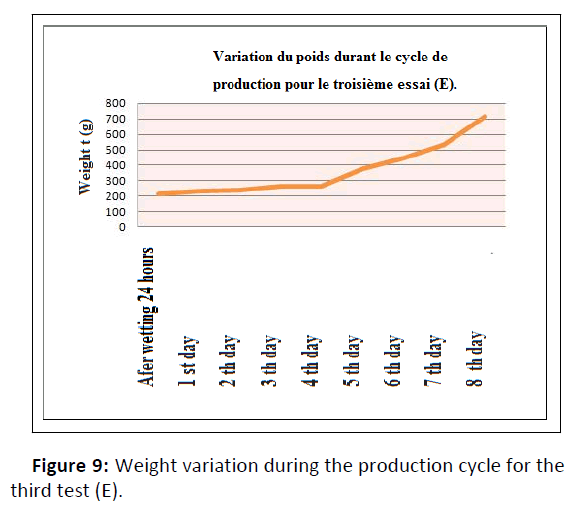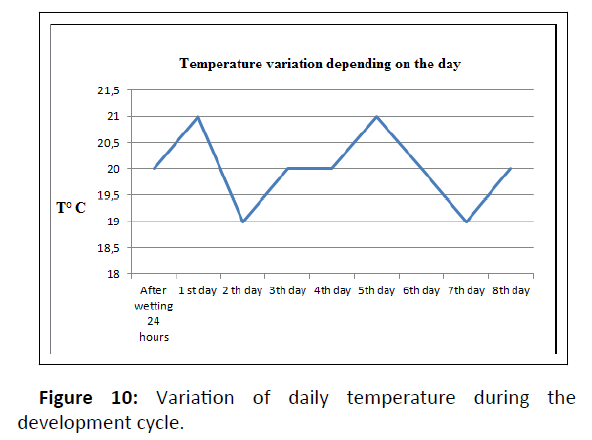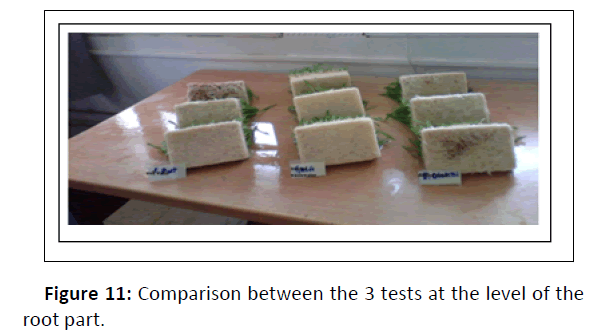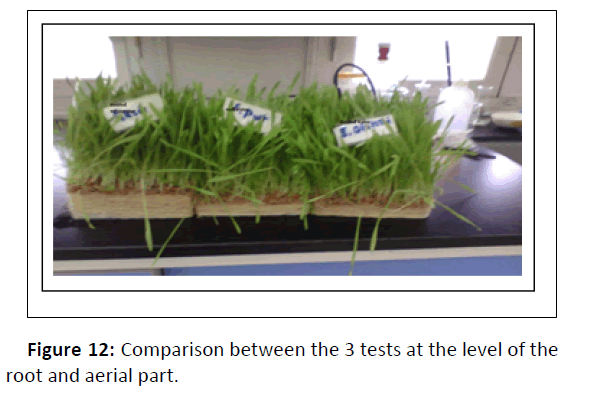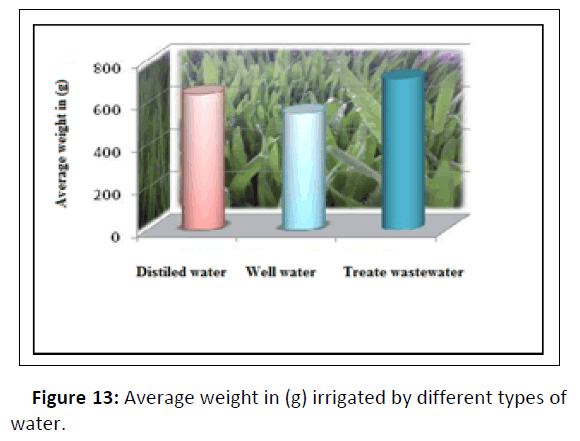Trial to Improve the Amount of Biomass in Hydroponic Barley
Hannachi Abdelhakim*
Department of Agronomy, Faculty of Sciences, University in Skikda, Skikda, Algeria
- *Corresponding Author:
- Hannachi Abdelhakim
Department of Agronomy, Faculty of Sciences, University in Skikda,
Algeria,
E-mail: Hakhannachi@yahoo.fr
Received date: October 24, 2022, Manuscript No. IPJPSAR-22-14938; Editor assigned: October 26, 2022, PreQC No. IPJPSAR-22-14938(PQ); Reviewed date: November 07, 2022, QC No. IPJPSAR-22-14938; Revised date: November 17, 2022, Manuscript No. IPJPSAR-22-14938(R); Published date: November 24, 2022, DOI: 10.36648/ipjpsar.7.1.89.
Citation: Abdelhakim H (2023) Trial to Improve the Amount of Biomass in Hydroponic Barley. J Plant Sci Agri Res Vol.7 No.1: 89.
Abstract
Forage seed germination results in young tender grass production equivalent to that of spring, and thanks to their efficiency it is considered today as an alternative solution compared to other high fodder prices, and with their ease of production in a cycle not exceeding 8 days. the reuse of biologically treated wastewater in agriculture can have positive impacts on the development of the plant, to study the effect of this reuse on the improvement of the quantity of biomass in hydroponic barley, three trials were carried out, test T (irrigated with distilled water), test P (irrigated with well water), test E (irrigated with treated waste water). Indeed, the results obtained indicate that the treated wastewater has a considerable effect on increasing the amount of biomass, thus, this technique relies on the absorption of the nutrients found in the treated wastewater by the plant and allows to transform them, which increases their mass, and improves certain physiological characteristics (roots and shoots).
Keywords
Improvement; Biomass; Wastewater; Forage; Hydroponic barley
Introduction
Hydroponic barley is a technique that consists of the germination of barley grains, only water and nutrients are used to produce a combination of grass (sprout) and roots during an 8 day cycle. This method of fodder production has many benefits for farmers, the economy and the environment [1]. However, the expansion of green fodder production for water conservation for other sectors is very important especially for arid and semi-arid countries [2].
The reuse of treated wastewater in agriculture has a beneficial effect in some cases on improving crop yields and the efficiency of irrigation systems thanks to their nutrient content and their richness in trace elements. In this context, and observed an increase in the biomass of a fodder plant when it is irrigated by either raw or treated wastewater. Thus, irrigation by EU causes a significant enrichment of the tissue of cultivated plants in trace elements, with an action on the morphological characteristics of the plants. Growth refers to the irreversible quantitative changes experienced by the plant over the course of time [3,4].
Our work aims to study the amount of biomass in hydroponic barley from a measurement of biomass and daily temperature in a cycle lasting 8 days. We try to answer the following questions:
• Does wastewater irrigation have an effect on increasing the amount of biomass?
• What is the quantity of yields obtained at the end of the production cycle?
Materials and Methods
Experimentation site
This work was carried out at the soil analysis laboratory of the University in Skikda, the laboratory consists of several devices for soil studies such as pH meter, conductivity meter, balance. The samples studied are placed on the same example condition: Temperature and humidity.
Materials
The objective of this work is to study the effect of irrigation by treated wastewater on the quantity of biomass in hydroponic barley (Hordeum vulgare), variety "saida 183 from a measurement of the temperature daily and the quantitative character (Figure 1).
Plant material
Saida 183, Breeder: ITGC (Saida Seed Demonstration and Production Farm), Pedigree: Selection, from the local population, Origin: Local, Applicant: ITGC, Type of variety: Pure line.
Adaptation zone: Interior plains and high plateaus. Harvested (2015) the characteristics of the variety are as follows:
Door at tillering of the plant semi-erect semi-spreading and the height (stem, ear and beard) long, 1st spikelet visible on 50% of plants with late heading and the time the number of ear rows more than two and reticulation of the dorsal veins of barbs is very strong, the length of the first spine segment short.
Agronomic characteristics
High yield, Qualitative characteristics, High PMG, Protein content 14.85%, FG 85%, Resistance, Cold: Resistant, Lodging: Sensitive, To drought: Resistant, Ginning: Resistant, Disease resistance, Yellow rust: Sensitive, Brown rust: Resistant, Black rust: Sensitive, Eyespot: Resistant, Septoria: Sensitive, Helminthosporiosis: Sensitive, Charcoal: Sensitive.
Laboratory equipment
Thermometer, Balance, Distilled water, Well water, Treated wastewater, Plastic box, Lamp, Plateau, Bottles are screened plastic tubes, Physico-chemical parameters of water. The physico-chemical results of raw and treated wastewater are grouped in the following Table 1.
| Settings | Raw wastewater | Treated wastewater |
|---|---|---|
| T (°C) | 22.12 | 21 |
| pH | 8.31 | 8.16 |
| EC (µ/cm) | 1773 | 1718 |
| 352.7 | 10.9 | |
| Turbidity(FTU) | ||
| TSS (mg/l) | 273.4 | 8.47 |
| BOD 5 (mg/l) | 168.75 | 16.7 |
| Kjeldhal nitrogen (mg/l) | 39.2 | 40.8 |
| Organic nitrogen (mg/l) | 36.2 | 40.47 |
| NH4+ (mg/l) | 3.42 | 0.35 |
| 1.4 | 1.82 | |
| NO2- - NO3- | ||
| 2.08 | 0.72 | |
| Phosphate (mg/l) |
Table 1: Physico-chemical characteristics of wastewater after t reatment.
Methods
Barley seeds "Saida 183 variety" are placed in plastic boxes, each test soaked by a type of water, the cultures are carried out in the laboratory, and the laboratory temperature is maintained at 200°C.
The different operations for setting up the trial
Barley seed (Horedium vulgare.L) weighed 100g from each trial in a 9-rep device. The semen was washed and soaked in 3 solutions (T-distilled water; E-treated waste water, P- well water). The seed was placed after 24 hrs of wetting. A daily weighing of the semen during an 8 day cycle. Watering was carried out by a drip irrigation system.
Description of the experimental method
The seed weighed 100 g in each sample, each test comprises three samples, the seeds of barley (Horedium vulgare.L) "variety of saida 183" were washed and soaked in the following 3 types of water (T-distilled water; E-treated waste water, P- well water), for one day (wetting 24 hrs) (Figure 2).
Day after we lifted the seeds and placed them in plastic boxes and finally we made the compaction. The seed was placed on 04/18/2016 at 12:15 min (1 day) (Figure 3). The watering was done by a drip irrigation system and made up of three bottles; each takes a type of water:
Test T: Irrigated with distilled water
Trial P: Irrigated with well water
Trial E: Irrigated with treated wastewater
Weighing was daily for an 8-day cycle. The results recorded in a table consisting of the name of the test, the day and the result of the weight.
Experimental apparatus
The experimental device is a factorial test with three repetitions; each test includes plastic boxes, irrigated with distilled water, well water, and treated waste water. A growth plan was made using the university lab to do our work.
Three trays 58 cm x 21 cm were placed in parallel under 9 plastic boxes 17 cm x 12 cm were screened. With a mesh that carries the plastic boxes and allows the water to descend into the trays for recycling (Figure 4).
The conditions inside the laboratory have been controlled to obtain a working temperature range of 190°C to 210°C, the humidity is not controlled due to the absence of a device which measures it, a lamp has was placed on the wall in a vertical position to provide 11 watts of light for 16 hrs per day (Figure 5).
Quantity of biomass
We followed the process of developing the quantitative state of the tests by measuring the quantity of biomass which represents one of the indices of the morphological state where each sample was measured (T test, P test, E test) at different stage of development (roots+shoots); Measurements were made from dry grain placement to tillering stage during an 8-day cycle (shoot length should be between 19 cm and 20 cm) (Figure 6).
Figure 6: Measurement of the quantity of biomass at the end of the development cycle (8th day).
Factors studied
Growth: The amount of biomass, the daily temperature.
Data analysis: All data collected underwent mean analysis and analysis using the STATICF software which includes the following formulas:



Results and Discussion
Variation in weight depending on the day
For the first try (T): We observe an increase in the weight according to the days, this increase is carried out by various stages, the 1st stage (after moistening 24 hrs until 3rd day), we observe a slow growth from 215.8 g, then the growth increases in the period between 3rd to 5th day, and we observe a retrogression of growth from 5th to 6th day, and from 6th day until the end of the cycle we observe an increase in growth up to 639.06 g (Figure 7).
The analysis of the means was made to compare the different parameters measured; a correlation matrix was extracted by the same software.
For the second trial (p): We observe an increase in the weight according to the days, this increase is carried out by various stages, the 1st stage (after moistening 24 h until 3rd day), we observe a slow growth from 217.31 g, then the growth increases in the period between 3rd to 5th day, and we observe a retrogression of growth from 5th to 6th day, and from 6th day until the end of the cycle we observe an increase in growth up to 549.06 g (Figure 8).
For the third try (E): We observe an increase in weight depending on the day, this increase takes place in different stages, the 1st stage (a ter wetting for 24 hrs until the 4th day), we observe a slow growth from 215.61 g, and from the 4th day until the end of the cycle there is an increase in growth up to 713.86 g (Figure 9).
Temperature variation depending on the day
During the development cycle the temperature range is varied between 19 to 21°C. We observe a kind of mediocrity in relation to the temperature; the latter is varied by two degrees during the production cycle (Figure 10).
Weight variation according to rhizogenesis
We observe a difference between the three tests at the level of the root part, Trial E (irrigated with treated waste water) has good root development compared to the other trials T and P (irrigated with distilled water and well water) these results are shown in the following Figures 11 and 12.
Discussions and Interpretation of Results
According to Intosh and Sneath, the germination of 1 kg to 1.3 kg of barley grain produces about 7 kg of green fodder 15 cm to 20 cm in height. And according to the hydroponic food production cycle and 8 days, the arti icial lighting and the conditioning unit used to control the temperature inside the growth chamber is maintained at 18°C ± 2°C (Figure 13). The results of tests carried out on the cultivation of barley hydroponically during the production cycle (growth; which translates to measured weight) show that: From 100 g of barley grains and a temperature range of 19°C to 21°C observe the following results.
• Trials irrigated with well water giving low growth with a quantity of biomass equal to 549.06 g and a maximum shoot height of 19 cm.
• Trials irrigated with distilled water giving an average growth of a quantity of biomass equal to 639.06 g and a shoot height of 20.5 cm maximum.
According to Hamouda nutrients are found in large quantities in wastewater, and constitute an important quality parameter for the valuation of these waters in agriculture and landscape management [5]. Nitrogen, phosphorus, potassium, and the trace elements, zinc, boron and sulphur, essential to the life of plants, are found in appreciable quantities, but in very variable proportions in relation to the needs of the vegetation. In treated or untreated wastewater. In general, a 100 mm layer of residual water can provide per hectare:
• From 16 to 62 kg of nitrogen
• From 2 to 69 kg of potassium
• From 4 to 24 kg of phosphorus
• From 18 to 208 kg of calcium
• From 9 to 100 kg of magnesium
• From 27 to 182 kg of sodium
According to Intosh and Sneath, a thick mass of roots which accounts for ¾ of the total weight. P and T tests do not give good results because of slow development at the root part, which indicates the depletion of nutrients in well water and distilled water, so the plant only feeds to the nutrients presented in the seed and the development of the roots ends in this limit, which decreases the total weight [6,7].
Test E gives good results because of rapid development at the root part, which indicates the presence of a high content of nutrients in the treated wastewater, so the plant feeds primarily on nutrients [8,9]. Presented in the seed and secondly to the nutrients presented in the treated wastewater which accelerates root development which increases the total weight. To confirm these results, the analysis of variance was performed in the following Table 2.
| Source of variation | DDL | SCE | CM | F observed | Theoretical F |
|---|---|---|---|---|---|
| S.V.Factoriel | 8 | 1154145,19 | 14,42,68,149 | 18,311 | 2,082 |
| S.V.Residuel | 72 | 56,72,44,452 | 78,78,39,517 | ||
| Total | 80 | 1721389,64 |
Table 2: The analysis of the variance of the weight for the three tests.
F observed ≥ F Theoretical the differences between the tests are signi icant (According to the law of student). The positive effect of treated wastewater on the amount of biomass can contribute to improving the production of fodder such as hydroponic barley. The valorization of biological and natural resources is the best approach to develop agriculture in the context of sustainable development [10].
Conclusion
Through this work, we tried to study the effect of treated wastewater in the context of improving the amount of biomass in hydroponic barley through the monitoring of certain parameters such as the daily measurement of the amount of biomass and the temperature. At the end of our study, and according to the results obtained, we distinguish that the waste water has an effect on the growth of the quantity of biomass compared to the test T and P irrigated by distilled water and well water in particular the last two days of the production cycle. Thus observes a high growth in the root layer compared to the other tests from the 5th to 8th day, this indicator means that there is an absorption of the nutrient elements found in the waste water by the roots, in which this absorption accelerates growth. The use of biologically treated wastewater in the production of off-ground fodder considered a new technique in organic farming, thanks to their numerous economic, biological and health advantages, as well as ensuring ease of work, production sustainability, improving quantity and quality, reducing production costs, saving water and labor and equipment.
Therefore, this technique allows us to develop the ield of agronomy and especially the livestock sector, in particular to meet national needs in dairy and meat production, which ensures national economic development. The positive effect of treated wastewater on the amount of biomass can contribute to improving the production of fodder such as hydroponic barley. The valorization of biological and natural resources is the best approach to develop agriculture in the context of sustainable development.
References
- Mooney J (2005) Growing cattle feed hydroponically. Meat and Livestock Australia: 30.
- Al-Karaki GN, Al-Momani N (2011) Evaluation of some barley cultivars for green fodder production and water use efficiency under hydroponic conditions. JJAS 7: 448-457. [Crossref],
[Google Scholar], [Indexed]
- Mohammad Rusan MJ, Hinnawi S, Rousan L (2007) Long term effect of wastewater irrigation of forage crops on soil and plant quality parameters. Desal 215: 143–152.
[Crossref], [Google scholar]
- Yadav RK, Goyal B, Sharma RK, Dubey SK, Minhas PS (2002) Post irrigation impact of domestic sewage effluent on composition of soils, crops and groundwater-A case study. Environ Int 28: 481–486.
[Crossref], [Google scholar]
- Hamouda MF (2004) Water strategies and potential of water reuse in the South Mediterranean countries. Desal 165: 31-41.
[Crossref], [Google Scholar], [Indexed]
- Ata M (2016) Effect of hydroponic barley fodder on awassi lambs performance. J Bio Agric and Health 6:1-5.
- Emam MSA, Badr AMM, Baker AA, Ismail FS, Solimman AM (2018) Evolution of some egyptian strains barley cultivators for green fodder hydroponic system and prediction digestibility values by in-vitro daisyii incubator. Egypt J Nutr Feed 21: 389-406.
[Crossref], [Google scholar]
- Fazaeli H,Golmohammadi HA, Tabatabayee SN, Asghari-tabrizi M (2012) Productivity and nutritive value of barley green fodder yield in hydroponic system. World Appl Sci J 16: 531-539.
- Gebremedhin WK, Deasi BG, Mayekar AJ, (2015) Nutritional evaluation of hydroponically grown barley fodder. J Agric Eng Food Technol 2: 86-89.
- Intosh F, Sneath R (2003) Review of hydroponic fodder production for beef cattle. Meat and Livestock Australia Limited: 55.
Open Access Journals
- Aquaculture & Veterinary Science
- Chemistry & Chemical Sciences
- Clinical Sciences
- Engineering
- General Science
- Genetics & Molecular Biology
- Health Care & Nursing
- Immunology & Microbiology
- Materials Science
- Mathematics & Physics
- Medical Sciences
- Neurology & Psychiatry
- Oncology & Cancer Science
- Pharmaceutical Sciences
